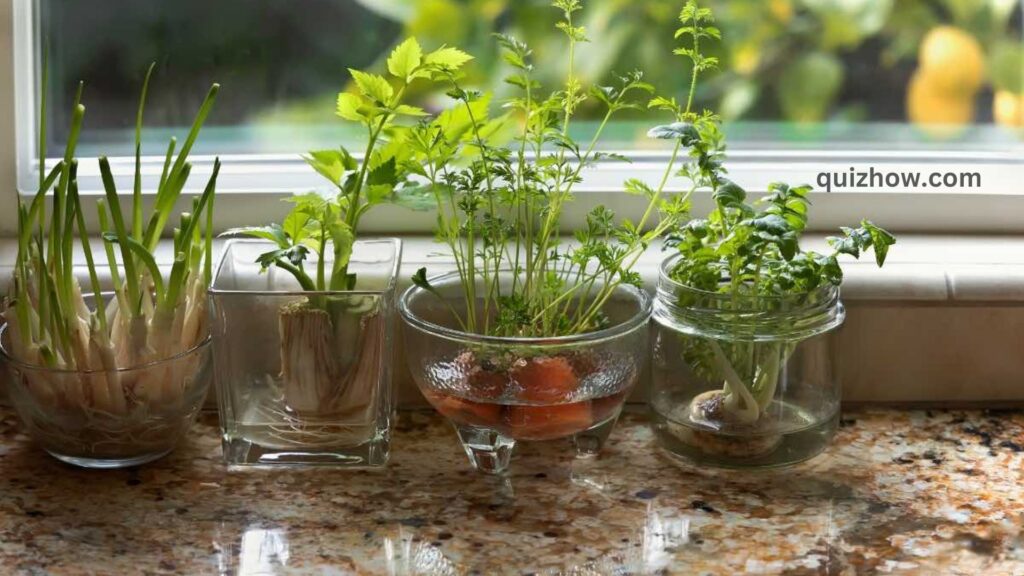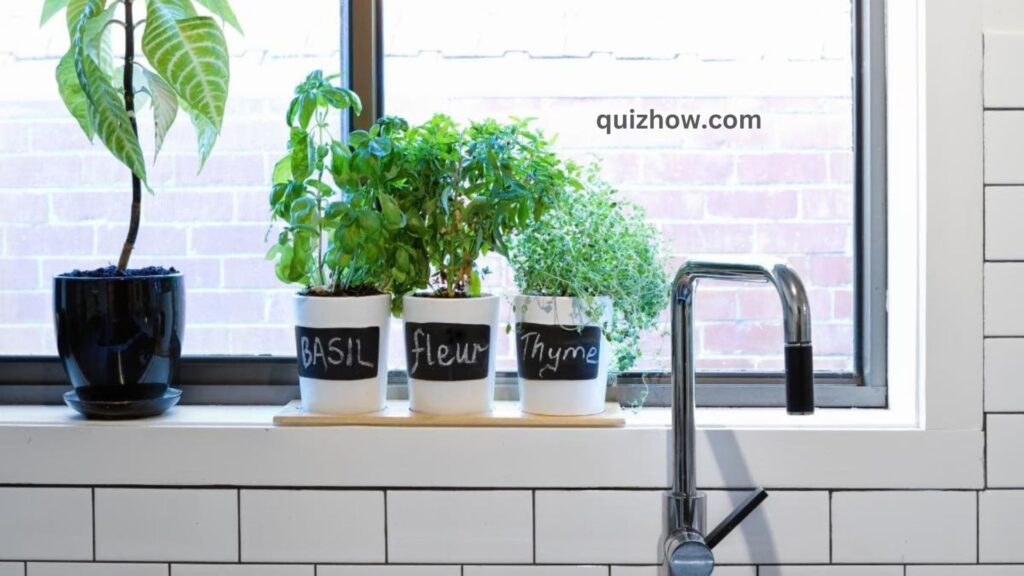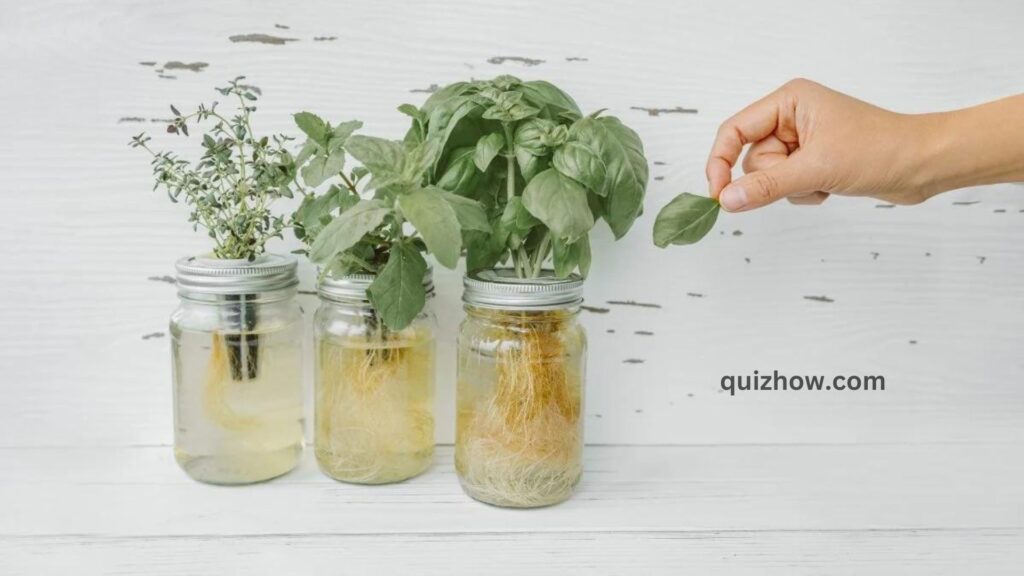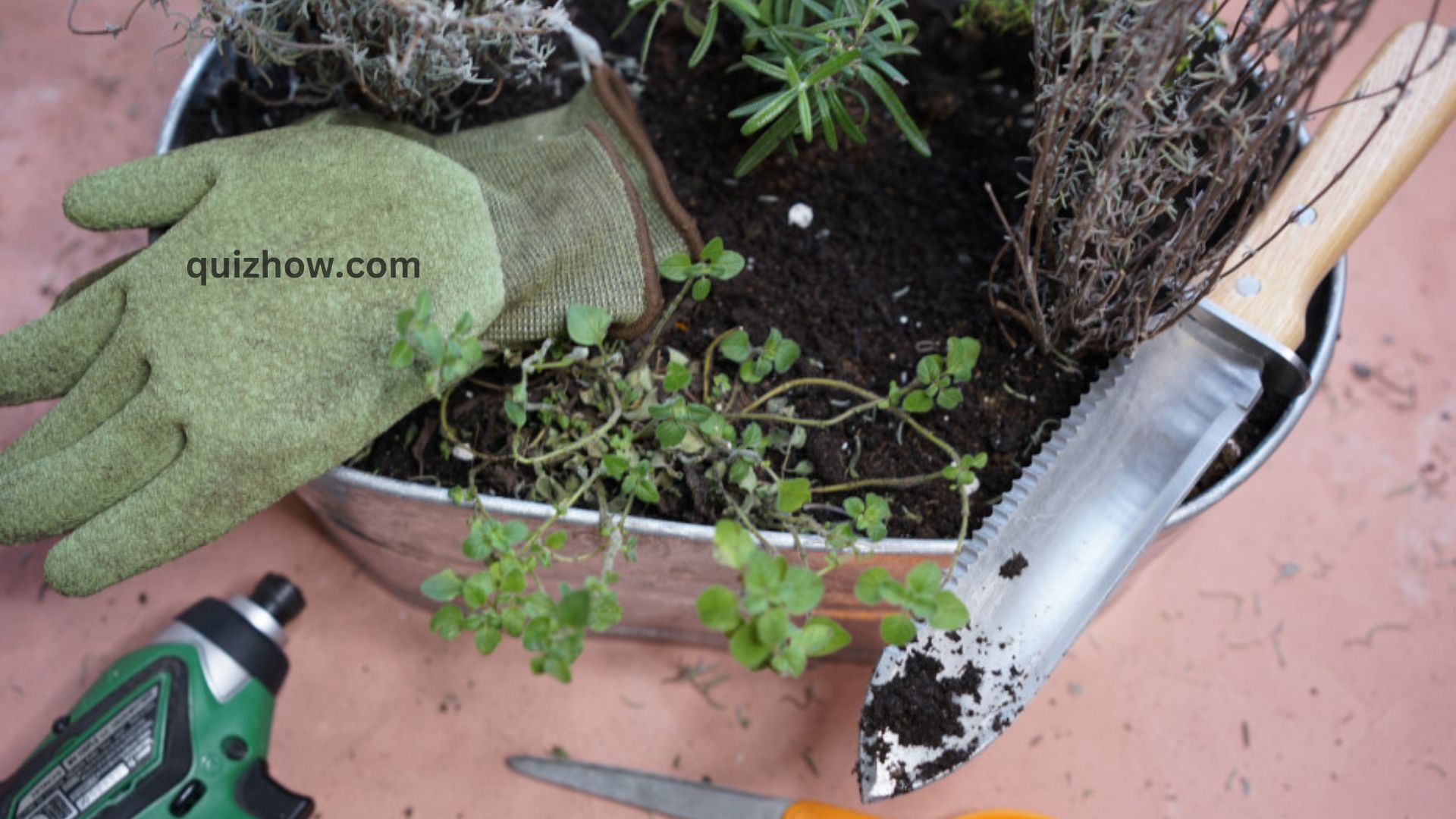Growing herbs indoors is both fun and rewarding. Adding fresh herbs to soups, stews, and salads really elevates your cooking and brings out fantastic flavors.
Herbs not only smell great but also add vibrant colors and flavors to a variety of dishes. If you’ve always wanted to try growing herbs indoors, this guide is just what you need!
We’ll cover how to get started, which herbs are easiest to grow inside, and how to take care of them at every stage.
To find out everything there is to know about growing herbs inside, continue reading.
How to Care for Herbs Grown Indoors
Light
Herbs need a lot of sunlight to grow well. To keep your indoor herbs happy, place them near the brightest window you have. A south or southwest-facing window with direct sunlight is perfect.

Herbs generally need at least 6 hours of direct sunlight a day, so a bright south-facing window works best. If your herbs only get 4 hours of direct sunlight, they’ll do fine in an east or west-facing window.
If your home doesn’t get enough natural light, you can use an LED grow light to help out.
It’s a good idea to rotate your potted herbs once a week so all sides get even sunlight. This helps them grow more evenly.
South-facing windows get the most light throughout the day, while east- and west-facing windows receive sunlight either in the morning or afternoon. During summer, the sun shines longer, which can be too much for some herbs. In the summer, try moving your herbs to an east- or west-facing window to avoid overexposure.
In winter, the sun isn’t as strong or as long. To keep your indoor herb garden thriving, place it in a bright, south-facing window where it can get the most light.
If you don’t have a sunny south-facing window, you can use a grow light or fluorescent light to give your herbs the extra boost they need.
Water
Watering herbs can be a bit tricky. While they need water to grow, too much can lead to root rot.
To check if your indoor herbs need watering, stick your finger into the soil up to your first knuckle. If the soil feels dry, it’s time to water. If it’s still moist, wait a day or two before checking again.
Make sure to use a tray or saucer under your herb pots to catch any extra water, and pour out any excess that collects in the tray.
Humidity
Placing your herbs on a windowsill above the kitchen sink can add a bit of extra humidity, which is really helpful during the dry winter months when indoor air is very dry.
You can also boost humidity by setting your pots on a waterproof tray filled with pebbles. When you water your plants, the excess water will drain into the tray. As the water evaporates, it will increase the humidity around your plants. Another option is to use a nearby humidifier.
Temperature
Herbs like temperatures between 65 and 75 degrees Fahrenheit. To keep your indoor herbs happy, make sure their leaves don’t touch the windows, especially during the cold winter months.
Most herbs can handle temperatures dropping into the 50s at night, but basil is especially sensitive to the cold. It’s best to keep basil in a spot where the temperature stays around 70 degrees Fahrenheit.
Air Circulation
Make sure your herb plants have plenty of airflow. If they’re packed too closely together, they won’t get enough air, which can lead to diseases spreading.
It’s a good idea to rearrange your herb garden regularly to keep the air around your plants fresh. If you notice that the air isn’t moving well, try using a fan nearby, but avoid blowing it directly on the plants.
Fertilizer
Indoor herbs don’t get nutrients from garden soil or rain, so they need a little help from fertilizer. You can use a balanced, all-purpose plant food or a liquid fish emulsion.
When your herbs are growing, use half the recommended amount of fertilizer every other week. It’s better to use a little less than to overdo it.

What are the Best Herbs to Grow Indoors?
Indoor herbs don’t get nutrients from garden soil or rain, so they need a little help from fertilizer. You can use a balanced, all-purpose plant food or a liquid fish emulsion.
When your herbs are growing, use half the recommended amount of fertilizer every other week. It’s better to use a little less than to overdo it.
How to Plant and Grow Herbs Indoors
Once you’ve picked out your herbs, it’s time to gather your supplies and get started. This section will walk you through everything you need and show you how to dive right in.
Containers
Herbs have different needs when it comes to sun, water, fertilizer, and harvesting, and they also grow at different rates. It’s easier to meet each herb’s specific needs if you grow them in separate containers.
You might need to move your herbs to a different window or water them more frequently depending on their needs. Having each plant in its own container gives you the flexibility to adjust their care.
Your containers should be at least 6 inches wide and 6 inches deep. If you’re starting with seeds, you can begin with smaller pots and then transfer your plants to larger ones as they grow.
For herbs like basil and parsley that have deep roots, choose taller containers—aim for at least 12 inches deep.
Drainage is really important because herbs don’t like to sit in wet soil. Make sure your pots have plenty of drainage holes at the bottom so excess water can escape. You can also use a saucer or tray to catch any extra moisture and protect your windowsill. You can find these at any garden center.
You can grow herbs in just about any container you have. Terra cotta pots are a great choice because they’re porous and let air and moisture flow through. This makes them better than plastic or ceramic pots, which tend to hold onto moisture. Using clay pots can actually help your herbs thrive better.
Soil
For your windowsill herb garden, choose a high-quality organic potting mix that’s designed for containers. You want a mix that drains well but still holds some moisture.
Indoor potting mix should be light, airy, and well-draining. If the mix stays too wet, your herbs might struggle. Avoid using garden soil because it’s usually too heavy and can carry pests or diseases.
Look for a potting mix that includes peat moss (or coconut coir), vermiculite, and perlite. For some herbs that prefer sandier soil, you can mix equal parts of all-purpose potting mix and sharp sand.
How to Plant Herbs When Growing Indoors
Purchase Herb Plants
You can set up your windowsill herb garden quickly and easily by buying plants from a nursery and repotting them into your containers. You’ll find herb starts at your local nursery or even at some grocery stores.
Grow from Stem Cuttings
You can start your indoor herb garden by cutting sprouts from an outdoor garden, rooting them in water, and then planting them in pots.
To propagate herbs from cuttings, just snip a 5-inch stem, remove the bottom few leaves, and place the stem in water to grow roots. Once the roots appear, transfer the stem to a pot and water it regularly until it’s established. After that, water as needed.
Mastering this technique is handy for growing many other plants, too.

Also Read: Design the Perfect Home Office: My Essential Gear
Divisions from Your Garden
You can also start your indoor herb garden by digging up established garden herbs, dividing them, and potting them. Herbs like chives, lemon balm, mint, oregano, sweet marjoram, and thyme are great for this.
If you’re bringing new plants indoors, it’s a good idea to keep them separate from your existing houseplants for a few weeks. This way, you can make sure they don’t bring any pests or diseases with them. Just watch them closely and keep them in a different room for a bit to avoid any surprises.
Start Herbs from Seed
Growing herbs from seed does take a bit longer, but it’s totally doable, especially with annual herbs like basil, cilantro, dill, and parsley. If you enjoy the process of planting and taking care of your herbs, starting from seeds is a fantastic way to grow a bunch of plants. It’s a rewarding way to nurture them from the very beginning.

Companion Planting Herbs
When you’re starting out with growing herbs indoors, it’s best to plant each herb in its own container. This way, you can take care of each one according to its specific needs.
We have a bunch of helpful plant guides on our website that make it easy to learn about any herb you’re growing. These guides will be super useful!
Different herbs have different needs. For example, Mediterranean herbs like sage, thyme, and rosemary prefer dry soil, while mint loves moist soil.
If you want to group herbs together, here’s a handy guide:
- Moisture-Loving Herbs: Basil, cilantro, parsley, and mint
- Dry Soil Preferring Herbs: Chives, oregano, sage, rosemary, sweet marjoram, and thyme
- Cold-Hardy Herbs: Chives, mint, parsley, oregano, sage, and thyme
- Slow-Growing Herbs: Chives, mint, oregano, sage, and thyme

Tips and Tricks for Growing Herbs Indoors
If you’re excited about growing herbs indoors but not quite confident yet, don’t worry! Technology has come a long way, and now there are smart indoor gardens that handle most of the work for you.
Two great options to explore are AeroGarden and Click and Grow. AeroGarden offers a range of indoor gardens, including the popular AeroGarden Harvest. Click and Grow also has a variety of choices, like the Click and Grow 25, which is perfect for growing leafy greens like lettuce.
These indoor garden systems are really user-friendly. Many have features like vacation mode, Wi-Fi connectivity, and app support, making it super easy to grow herbs indoors. They come with LED grow lights, so you can keep your plants thriving all year round, no matter the weather outside. Plus, they include starter kits with seed pods, so you can get started right away without any fuss.
We’ve got detailed reviews and guides on both AeroGarden and Click and Grow on our site, so be sure to check them out if you’re interested!

Discover more from QuizHow
Subscribe to get the latest posts sent to your email.


This paragraph is in fact a pleasant one it assists
new net people, who are wishing in favor of blogging.